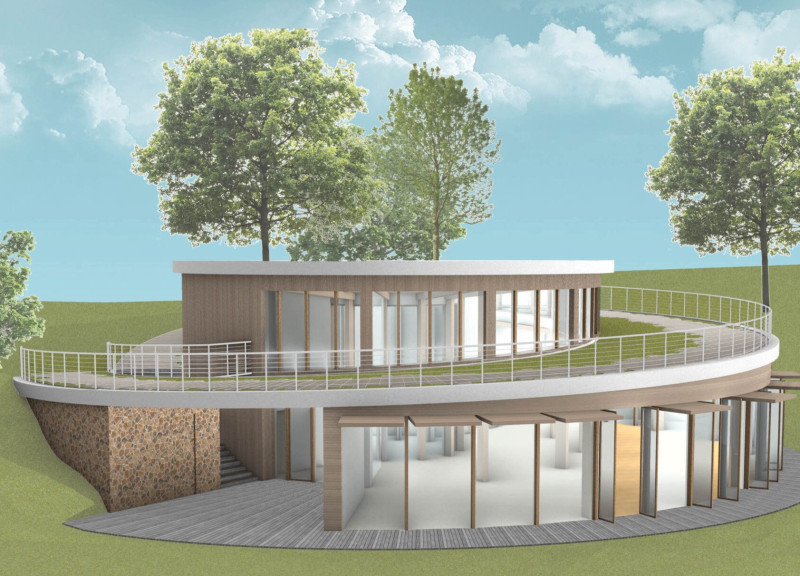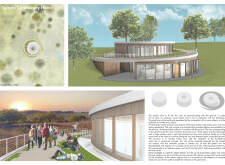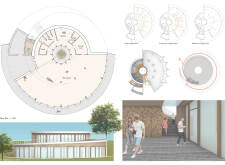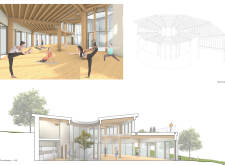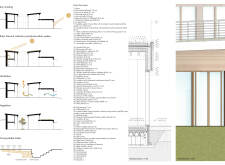5 key facts about this project
Functionally, the project is designed to serve as a multipurpose space, accommodating various activities that cater to the community’s needs. This flexibility is a key aspect of its design, allowing it to adapt to different uses over time. The layout encourages interaction and engagement among visitors, with communal areas fostering social connections while private spaces provide necessary solitude. Each zone is purposefully defined, promoting a dynamic flow that enhances the overall experience of the building.
The architectural design employs a diverse palette of materials, each carefully selected for its properties and overall contribution to the project. Concrete forms the structural backbone of the building, chosen for its longevity and capacity to provide thermal mass. Large expanses of glass are integrated into the facade, blurring the lines between interior and exterior spaces, while allowing natural light to flood the interior. This choice not only emphasizes transparency but also creates a sense of openness and connection to the natural surroundings. Wood elements introduce warmth and texture, providing a tactile quality to accents and finishes, while steel components are used strategically to enhance structural integrity without compromising the aesthetic values of the design.
Unique design approaches are evident throughout the project, particularly in its focus on sustainability. Passive design strategies are employed to minimize energy consumption, with large overhangs providing shade in the summer and allowing sunlight to warm the spaces during winter months. Rainwater harvesting systems are integrated into the overall design, promoting responsible water use and reducing reliance on municipal supplies. Additionally, the incorporation of green roofs and living walls contributes to biodiversity while also improving air quality. These environmentally conscious choices reflect a growing trend in architecture that prioritizes harmony with nature and the well-being of future occupants.
The project also demonstrates a keen eye for detail and craftsmanship. From the intricate joinery of wood elements to the precision of the stonework, each facet of the design has been executed with care. This attention to detail enhances the overall aesthetic coherence and ensures that the building is not only functional but also visually compelling. Users can appreciate the thoughtful placement of seating areas that invite relaxation and the incorporation of landscaping that integrates the building into its context, reinforcing a sense of place.
In summary, this architectural project stands as a remarkable example of how design can effectively address both functional requirements and aesthetic aspirations. Its commitment to sustainability and community engagement captures the essence of modern architectural thought, providing a valuable resource for its users and setting a benchmark for future developments in the field. For those interested in delving deeper into the project's features, exploring architectural plans, architectural sections, and architectural designs will offer further insight into the innovative ideas and thoughtful execution behind this exemplary work. Experience the full scope of this project to appreciate the nuanced details and the intricacies of its design.


